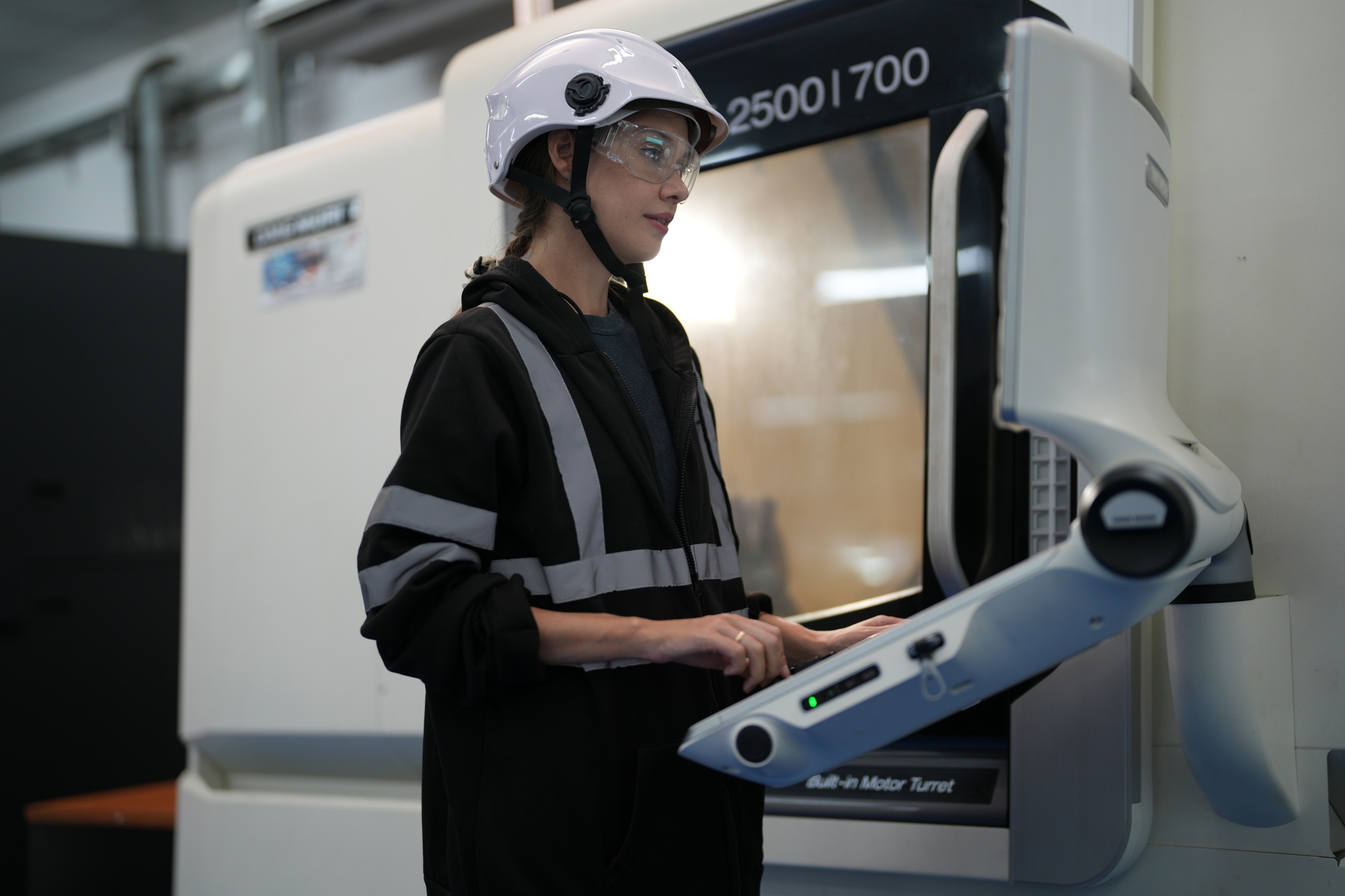Artificial Intelligence (AI) has rapidly transformed from a niche academic pursuit into a driving force behind economic, political, and social change worldwide. Central to this transformation are a handful of influential figures—often dubbed “AI godfathers”—whose pioneering work and industry leadership have shaped the trajectory of AI research and development. However, as AI continues to infiltrate every aspect of our lives, critical questions emerge: Who holds the reins of this technology, and what dangers lurk behind concentrated power?
In this comprehensive article, we explore the rise of these AI power brokers, examine the inherent risks of an industry dominated by a few, and delve into the broader ethical, technical, and geopolitical issues that have not always been in the limelight. We also look at recent global discussions, including pivotal talks in Paris, and answer some of the most commonly asked questions on the topic.

The Rise of the AI “Godfathers”
In the early days of AI, a cadre of visionary researchers laid the groundwork for breakthroughs that would one day revolutionize entire industries. Today, the term “AI godfathers” refers not only to these trailblazers but also to a group of contemporary leaders whose decisions and investments have steered AI into its current state. Their contributions include:
- Foundational Research: Groundbreaking work in neural networks and machine learning that provided the mathematical and theoretical basis for modern AI.
- Commercialization: Transitioning AI from theoretical concepts to practical applications, influencing everything from natural language processing to autonomous vehicles.
- Ecosystem Creation: Establishing proprietary platforms, datasets, and development tools that have become industry standards, often locking in users and limiting competition.
While their achievements have propelled technological progress, their outsized influence raises concerns about accountability, transparency, and long-term societal impacts.
Concentration of Power and Its Risks
The consolidation of AI research and development within a few major corporations and elite research institutions has led to unprecedented innovation—but also to significant risks:
1. Monopolistic Practices and Reduced Competition
When a small number of players control key technologies and data repositories, innovation can become stifled. These companies often operate in closed ecosystems that limit access for smaller competitors or independent researchers, potentially slowing the pace of breakthrough discoveries and reducing the diversity of ideas.
2. Opaque Decision-Making
Many of the algorithms powering our digital lives operate as “black boxes,” meaning that even their creators cannot fully explain how they arrive at decisions. This lack of transparency can be dangerous, particularly when AI systems are used in critical areas like criminal justice, healthcare, or finance.
3. Ethical and Social Implications
Unchecked power in AI can lead to the reinforcement of biases and discrimination. AI systems trained on skewed data can perpetuate historical inequities, while opaque corporate practices may sideline ethical considerations in favor of profit.
4. National and Global Security
As AI becomes integral to national defense, economic stability, and critical infrastructure, the concentration of its power raises strategic concerns. Nations may become overly dependent on a handful of international corporations or risk falling behind in a global technology race.
Beyond the Hype: Underexplored Dangers and Missing Details
While much has been discussed about the visible dangers of AI, several subtler yet significant risks have received less attention:
Environmental Impact
Training state-of-the-art AI models requires vast computational resources, leading to a significant carbon footprint. The environmental cost of powering enormous data centers and high-performance computing clusters is often underemphasized in mainstream discussions.
Resource Disparities
The race to build more powerful AI systems has led to an arms race in computational power. This trend risks widening the gap between well-funded tech giants and smaller players, including academic institutions and startups, further centralizing control.
Existential Risks
Beyond immediate social and economic concerns, there is an ongoing debate about the long-term existential risks posed by superintelligent AI. Although speculative, these discussions force us to consider whether our current trajectory might lead to unforeseen and irreversible consequences.
Regulatory and Governance Gaps
Global regulation of AI remains fragmented and reactive. While regions like the European Union are spearheading initiatives such as the AI Act, many parts of the world lack comprehensive frameworks. The absence of a unified approach means that companies can sometimes “shop” for the most lenient regulatory environments, exacerbating ethical and security concerns.
Global Perspectives and the Paris Dialogue
In recent months, a series of international summits, including a landmark conference in Paris, have attempted to address the challenges posed by AI’s rapid evolution. These discussions have highlighted several key points:
- International Cooperation: Leaders from various sectors and countries have stressed the importance of coordinated regulation and standard-setting. A global approach is essential to prevent regulatory arbitrage and ensure that ethical standards are maintained worldwide.
- Balancing Innovation and Regulation: Policymakers are grappling with the challenge of fostering innovation while protecting public interest. There is a growing consensus that regulation should not stifle creativity but must enforce accountability and transparency.
- Public and Private Sector Roles: The Paris talks underscored the need for joint efforts between governments, corporations, academia, and civil society. Transparency initiatives, shared research, and public-private partnerships were all proposed as ways to democratize AI development.
The Road to a Balanced Future
The future of AI is at a crossroads. On one hand, the technology promises to revolutionize industries, improve efficiencies, and solve complex global problems. On the other, the concentration of power and lack of robust oversight could lead to outcomes that are harmful both socially and environmentally.
Key Recommendations for a Responsible AI Future
- Robust Regulation: Develop comprehensive, internationally coordinated regulatory frameworks that ensure ethical development and deployment of AI systems.
- Transparency and Accountability: Mandate that companies disclose key details about their AI systems, including decision-making processes, data sources, and measures to prevent bias.
- Environmental Considerations: Integrate sustainability into AI research by investing in energy-efficient computing technologies and carbon offset programs.
- Inclusive Innovation: Support open-source initiatives and provide funding for academic and independent research to democratize access to AI advancements.
- Public Engagement: Foster dialogue between industry leaders, policymakers, and the public to align technological progress with societal values.

Frequently Asked Questions (FAQs)
Q1: Who exactly are the “AI godfathers”?
A1: The term “AI godfathers” generally refers to the pioneering researchers and current industry leaders who have significantly influenced the field of AI. These individuals have been instrumental in both the foundational theories and practical applications that drive today’s AI technologies. Their influence extends to shaping research agendas, commercial strategies, and even regulatory discussions.
Q2: What are the main dangers associated with a concentrated AI industry?
A2: The risks include monopolistic practices that can limit innovation, opaque algorithmic decision-making that may lead to biased or unfair outcomes, and a lack of accountability that poses challenges for regulation. Additionally, the centralization of AI development can exacerbate economic disparities, create security vulnerabilities, and contribute to environmental degradation through high energy consumption.
Q3: How can governments and regulators help mitigate these risks?
A3: Effective mitigation requires robust, internationally coordinated regulatory frameworks that enforce transparency, accountability, and ethical standards. Governments should also support independent research and open-source initiatives to ensure a diverse and competitive ecosystem. Importantly, regulations must balance the need for innovation with protections for public welfare.
Q4: What ethical concerns arise from current AI developments?
A4: Ethical issues include inherent biases in data and algorithms, privacy infringements, job displacement due to automation, and potential misuse in surveillance and misinformation. There is also a growing concern over the environmental impact of AI technologies, particularly the substantial energy requirements for training large models.
Q5: What steps are being taken globally to address these challenges?
A5: Various initiatives are underway around the world. For instance, the European Union is actively developing the AI Act, which aims to regulate AI by classifying systems based on risk levels. International forums, such as the recent Paris conference, are promoting cross-border cooperation and dialogue among stakeholders. These efforts seek to create a balanced approach that nurtures innovation while safeguarding societal and environmental interests.
Q6: What does the future hold for AI if these issues aren’t addressed?
A6: Without decisive action, the risks could manifest in several ways: increased social and economic inequalities, erosion of public trust in technology, and even scenarios where AI systems cause unintended, potentially catastrophic harm. Conversely, with proactive regulation and inclusive development, AI could be steered towards a future that benefits all of society.
Conclusion
The transformative power of AI is undeniable, yet the concentration of influence in the hands of a few “godfathers” poses significant risks. As we stand on the brink of further technological revolutions, it is imperative that we address these challenges head-on. By fostering a collaborative ecosystem that includes diverse stakeholders, implementing transparent and fair regulatory frameworks, and addressing the environmental and ethical implications of AI, we can pave the way for a future where innovation and responsibility go hand in hand.
The discussions initiated in global forums, notably in Paris, are just the beginning. It is now up to governments, industry leaders, and the public alike to ensure that AI serves as a tool for progress rather than a mechanism of control. The future of AI is not predetermined—it is shaped by the choices we make today.
Sources The Guardian


